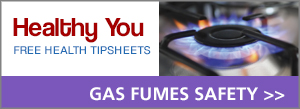What some people might think of as online entertainment or a fun way to stay in touch with friends has turned into a communications boon for the public health community, particularly in times of crisis.
Social media tools such as Twitter and Facebook are allowing public health officials to reach out fast and directly to the public on everything from salmonella-related food recalls to disease outbreaks and weather emergencies.
“We’ve tried to make social media a very everyday thing for us here,” Laura Howe, senior director of public affairs for the American Red Cross, told The Nation’s Health. “Basically, we’re trying to advance the mission of helping people prepare for and respond to emergencies. We’re really looking to ensure that people can get very quick, very effective access to the information where they can either get help or give help.”
Social media, which include tools such as Twitter, online photo and video journals and social networking sites such as Facebook and MySpace, have exploded in popularity in the public health community, especially in the past year. The tools allow users to switch easily between the roles of audience and content producers.
Federal agencies such as the Centers for Disease Control and Prevention and the Food and Drug Administration have recognized the power of social media, using the broad reach of the online community to help distribute important health information and learn what issues are popping up across the country at any given time.
“The Web is no longer static content,” Andrew Wilson, who manages the federal Pandemicflu.gov Web site and is part of the Web Communications and New Media Division of the U.S. Department of Health and Human Services, told The Nation’s Health. “You really have to get your message out to where people are going to be.”
Wilson pointed to the success of the public health response to the recent recall of salmonella-contaminated peanut butter and peanut products. During the 2008-2009 outbreak, which was tied to products from the Georgia-based Peanut Corporation of America, FDA developed a database that allowed consumers to enter a product name or barcode and find out if it had been recalled. Yet federal officials needed a way to make sure the general public knew how to access the database.
CDC officials then built a “widget” — an application that displays featured content that is maintained by the agency — that any user could post on a Web site or blog and give access to the searchable database. Everyone from state and local health departments to the public had access to the tool.
“It gave so many more people the opportunity to get that information,” Wilson said.
For state and local health departments, social media offer ways to reach different segments of the population, said Kate Lilja, who heads social media efforts for the Salt Lake Valley Health Department in Salt Lake County, Utah.
Those efforts include the department’s One Small Change campaign encouraging residents to make a change to improve their health, such as choosing high-fiber wheat bread over white or biking to work. Campaign messages are available via video on a YouTube channel, through captioned photos on a Flickr page, as comments and videos linked to a Facebook page, and via messages sent out from the department’s Twitter.
“We combined traditional outreach methods with our social media outreach,” Lilja told The Nation’s Health.
Health department staff still go to health fairs and schools and talk to business and community leaders about making “one small change,” but by having online tools involved, more people are likely to both hear and talk about the message, she said.

APHA’s Get Ready Twitter was used to communicate accurate information on H1N1 as the outbreak broke this spring. Staff from The Nation’s Health tweeted live from news conferences.
“It’s also a population where, if they like the message, they’re going to help you spread it,” she said. “That’s been something really great, to see how it spreads virally.”
The department has also used its social media tools to communicate timely information to the public on H1N1 cases and pandemic flu prevention.
The upside of the democratic nature of social media is that scores of people can help broadcast important public health messages, according to users. The downsides include security concerns and making sure credible information is not lost in the conversation.
Researchers are continuing to look into ways social media can help augment traditional disease surveillance methods and perhaps give public health agencies the jump on outbreaks, medication reactions or other concerns. Alessio Signorini, a PhD candidate at the University of Iowa and technology director for the social search engine OneRiot, recently came up with an interactive, real-time map that shows what Twitter users are saying about swine flu, for example.
A lot of the conversation might just be idle chatter, but some of the talk could prove useful in tracking health trends, Signorini told The Nation’s Health. Through Twitter, users create short, 140-character messages, called “tweets,” that can be followed online or via text message.
“Now that there’s Twitter, people wake up in the morning with a headache and try to tweet about it,” he said. “They are much more likely to write a tweet about it than go to the doctor with every headache and every sneeze.”
That could come in handy for surveillance if, say, students from a particular dorm were sending out queries about a rash or a cluster of people from one town had similar concerns about a particular medication or illness symptoms.
A 2009 online survey on social media use during times of crisis gave a snapshot of the types of tools used, finding that some in public health have yet to get on board with the new technology or to gauge its impact. Conducted by APHA and Booz Allen Hamilton with more than 540 public health and safety leaders, 57 percent said they were not yet using social media tools for communicating public health issues or emergencies. The majority of those who use social media tools have done so for less than three years, and only 41 percent evaluate the effectiveness of their social media.
In the evidence-based world of public health, coming up with true measurements of social media effectiveness poses a challenge, but as the tools are used more frequently, data is emerging. For example, Wilson said the Twitter account CDC uses to communicate about emergencies, at twitter.com/ cdcemergency, had 2,500 followers before the H1N1 influenza outbreak. In late June, the account had 370,000 followers, a huge network of potential communicators to heed and help spread public health emergency messages.
APHA has worked to harness the power of social media through efforts such as its Get Ready Twitter feed, which allowed the Association to broadcast live from CDC and World Health Organization news conferences during the height of the recent H1N1 influenza outbreak. Among its social media outreach efforts, APHA recently hosted a roundtable in March on using social media during times of crisis.
One common social media pitfall is what Howe at the Red Cross called “shiny new object syndrome” — the temptation to latch on to every new tool that is created.
“I think people do spend a lot of time chasing after tools that are up and coming or brand new without the goals and objectives in mind of what they’re trying to achieve,” said Howe, whose organization is approached constantly by vendors touting their social media products.
Health and technology consultant Grant McLaughlin, who works with Booz Allen Hamilton advising agencies such as HHS and FDA, also tells his clients to get focused before launching into the social media world.
“You have to know your audience and where you’re going,” McLaughlin told The Nation’s Health. “You could put up a Facebook page, but if your audience isn’t on Facebook, why would you do it? If your audience isn’t on Twitter, you shouldn’t be tweeting, because it’s just going into a vacuum.”
For more information, see the links below.
Social media, risk communication resources
HHS: www.newmedia.hhs.gov
CDC Emergency Twitter: http://twitter.com/cdcemergency
FDA Recalls Twitter: http://twitter.com/FDARecalls
APHA Get Ready Twitter: http://twitter.com/GetReady
Red Cross social media: http://www.redcross.org/en/connect
APHA roundtable on social media, risk communications: www.apha.org/about/news/socialmediariskcomm_roundtable.htm
- Copyright The Nation’s Health, American Public Health Association








